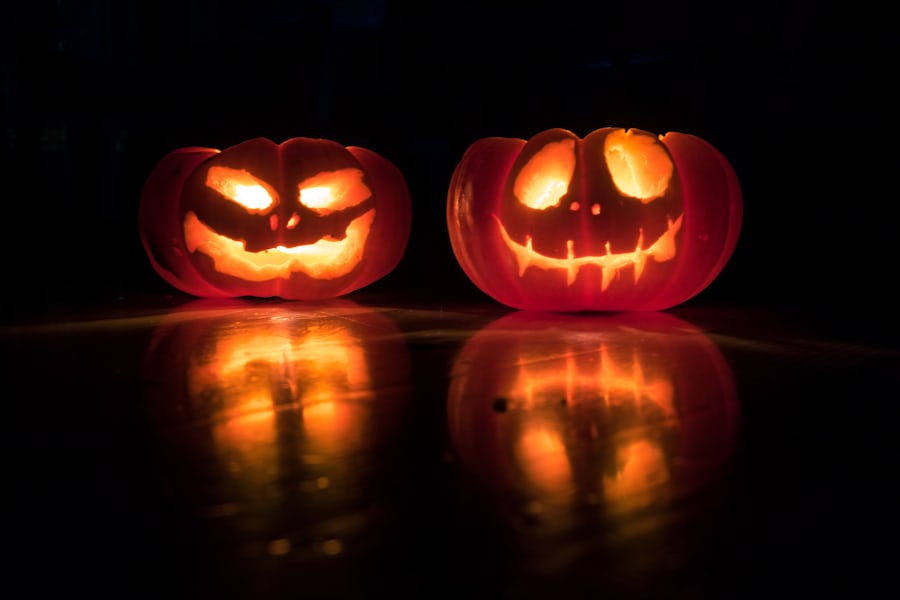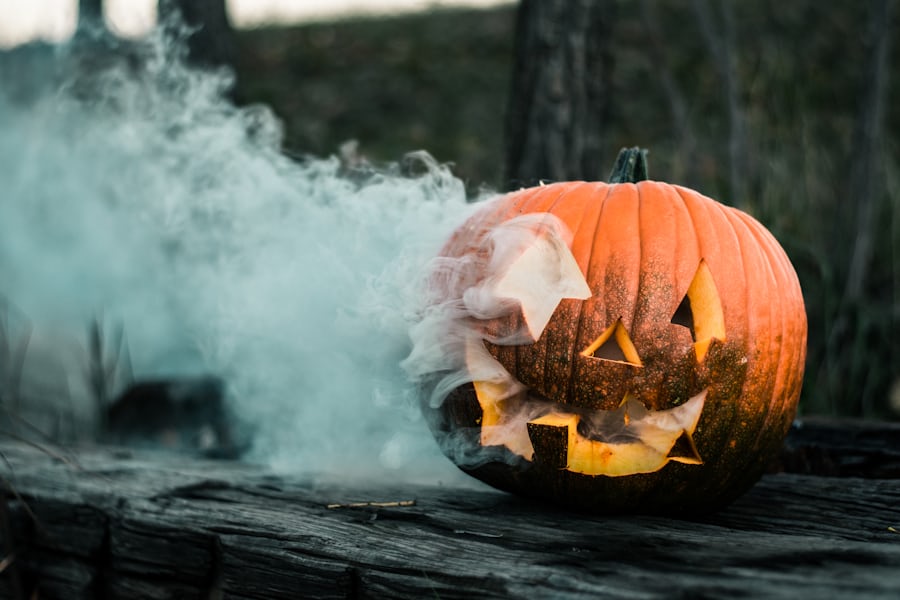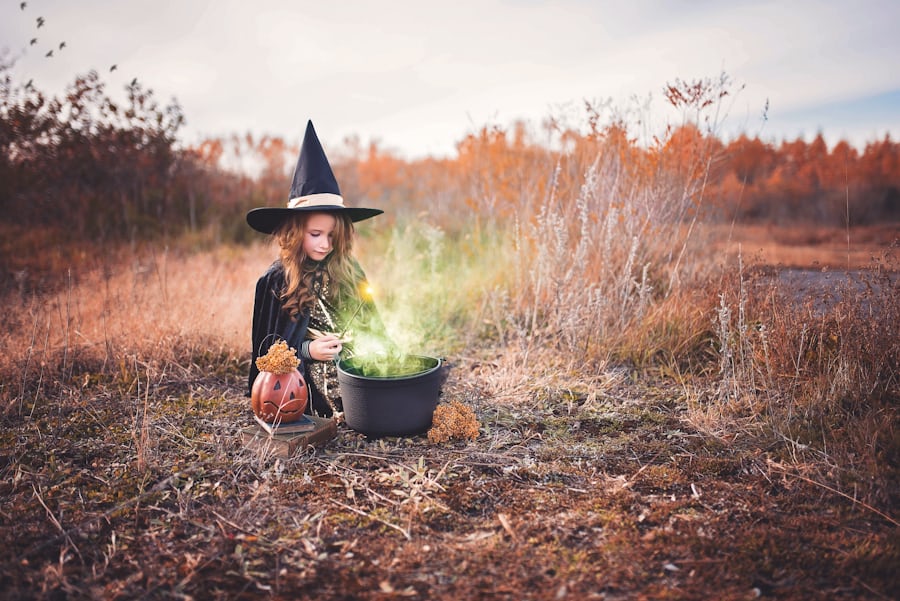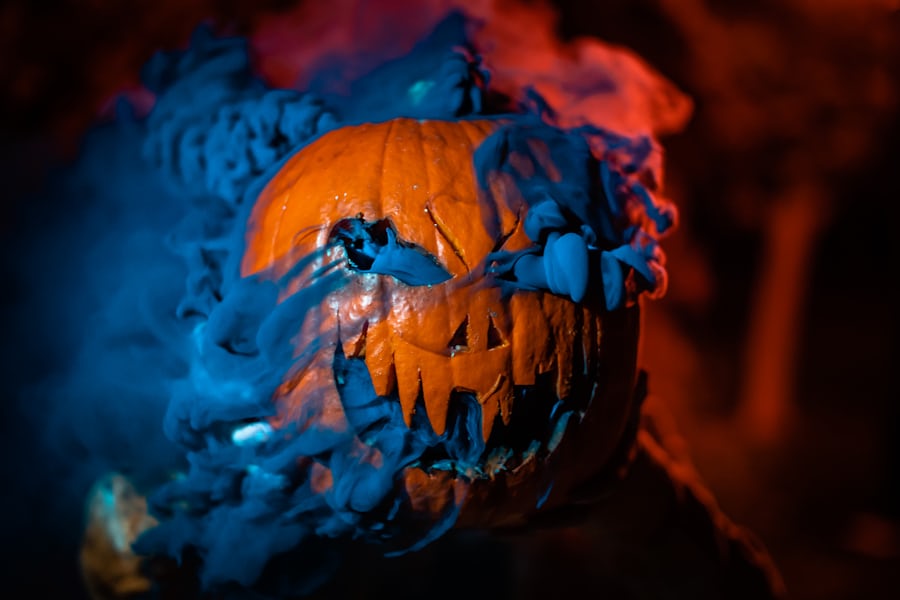Halloween is not only a horror that is popular in the United States. In the Netherlands, too, you will find more and more Halloween clothes, Halloween candy and Halloween decorations in the stores. Halloween parties are also being given more and more often. You should try to dress as creepily as possible. Popular costumes include Dracula and a witch. In the United States, they go a little further: children go in their scary costumes past the doors to collect candy. But what exactly is Halloween and where does it come from?
What is Halloween
Halloween is a celebration that takes place every year on the evening of October 31. In, especially in English-speaking countries, it is a popular party where children go to the doors dressed up. People decorate their houses with special Halloween decorations and bring candy into the house to give to the children. Well-known decorations are the pumpkins, which are hollowed out and given a scary face. Often a candle is placed in the hollowed-out pumpkins to make it look even narrower. These pumpkins are better known as Jack-‘o-Lanterns. When the resident opens the door, the children shout: “Trick or Treat!”. The residents are then given the choice of giving candy or playing a joke. Often candy is given. A well-known snack during this evening is the apples, which are covered with sugar or coffee.

What does Halloween mean?
The name Halloween (originally Halllowe’s) is a contraction of All Hallows Eve, which is better known in the Netherlands as All Saints Eve. This is the evening for All Saints Day, which takes place on November 1. In the Celtic calendar, the new year started on this day and therefore October 31 can be seen as New Year’s Eve. A day on which everyone was free to celebrate that the harvest had arrived.
Halloween in the Netherlands
In the Netherlands, there is a party that shows many similarities with Halloween: Sint Maarten. At this party, the children also go to the doors to pick up candy. This is celebrated every year on November 11 in the Catholic parts of the Netherlands, Belgium, and northern France. Children go with their lanterns past the doors and sing a song in exchange for candy. Yet it seems that Halloween is increasingly being chosen.
Criticism at the party
Although more and more people are discovering Halloween, some people have the necessary criticism of the party. Just like Valentine’s Day, Halloween is seen as a commercial day that only exists to make people spend money. Besides, many denominations see the festive evening as a pagan celebration. It would encourage people to call on spirits, something that is not allowed in the Bible.
The most popular international Halloween

The most popular international holidays are increasingly flying over to the Netherlands and that is of course very nice. More and more Dutch people are taking part in popular international holidays such as Halloween and Thanksgiving.
Halloween
Halloween is derived from All Hallows even, this is the evening before All Hallows Day or All Saints Day. Halloween is celebrated on October 31. It is the evening before evening for All Saints Day on November 1. According to a tradition, Halloween comes from the old druids. They believed that on that evening the evil spirits were called together by Saman, the lord of the dead. To dislodge the evil spirits, the druids fired large fires. These days Halloween is being tackled in a big way. Commerce has responded well and it is a holiday that is celebrated in England, Ireland, America and Canada. This day is also becoming increasingly popular in our country. Special parties are organized in this way.
Children’s party

Halloween is primarily a children’s party. It is the tradition in America that children dress up on October 31 and ring the bell at night in nearby houses. These houses are again decorated with pumpkins and lights. The children can opt for trick or treat. With a trick, they can play a teasing and with a treat, they get something tasty, usually candy. The residents then give the children sweets.
Pumpkins
Pumpkins are inextricably linked to Halloween. These refer to the Roman harvest festival. Then faces were carved on hollowed-out pumpkins. Candles were placed on the inside.
Thanksgiving
Thanksgiving is a national celebration that is celebrated in America and Canada. Thank you for the harvest and other good things. In America, Thanksgiving is celebrated on the fourth Thursday of November. In Canada, this is on the second Monday in October. The harvest ends here sooner than in America. It is a real family day. Thanksgiving falls on a Thursday in America, so many people are free on Friday.
These four days are therefore dominated by a family reunion with many families. Thanksgiving is all about eating together. This day is also called Turkey Day because turkey is eaten very often. Well-known and traditional side dishes that come with the turkey dish are sweet potatoes, mashed potatoes, cranberries, green beans, pecan pie, and pumpkin pie. In America, it is customary to watch an American football game before a meal.
Independence Day
Independence Day is also called the Fourth of July. This day is therefore also celebrated on July 4. It is not an international holiday. Independence Day is celebrated exclusively in America in honor of the American Declaration of Independence on July 4, 1776. This declaration confirmed America’s independence from England. Independence Day is always celebrated in America. There is something to do and see in every place or city, such as parades, picnics, barbecues, baseball games, and fireworks. The history and traditions of America are then celebrated.
Many people are free on this day.
The history and meaning of Halloween
A large part of the American population celebrates Halloween. Everyone is busy decorating their house, giving a Halloween party and of course dressing up as scary as possible! They put so much effort into having a great costume, collecting the tastiest candy, and making their home as frightening as possible, but do the Americans themselves know why they celebrate Halloween and where it all started?
The origin of Halloween is still the subject of discussion. But the belief of most is that it had something to do with the Celtic holidays in ancient Europe.
The Celtic druid Samhain holiday
The Celts had two important gods, the sun god and the god of the dead. This last day was celebrated on November 1.

This was also the first day of the new year. The holiday was called Samhain.
Even in the days when the Roman Empire reigned, the holiday was celebrated. As is usually the case in the Empire, the Celtic elements were mixed with those of the Roman myths. This was for example about the worship of Pomona, the goddess of fruits. Halloween games such as apple bites stem from this Celtic / Roman fusion.
The holiday in Christian Europe.
It was the custom in early Christian Europe to celebrate festivals on pagan days. Pope Gregory III declared November 1 as the day of Christian martyrs. The reason why this day was chosen is unclear, but many people believe that this was to make people forget the Celtic holiday. A few years later, November 2 was proclaimed the Christian Day of the Dead.
All Hallow’s Eve
November 1 became known as All Saints ‘or All Hallows’ Day. November 2 became known as All Souls Day. The true origin of Halloween is the baptism of the night of October 31 as All Hallow’s Eve. Over time, All Hallow’s Eve became known as Hallow’s Eve and eventually Hal o ‘Ween.
Habits and beliefs
Although the Celtic myth was forgotten, faith remained. During the Middle Ages, Europeans believed that demons, ghosts, and witches flew through the air on October 31. It was also said that fairies roamed.
During this time people went to fortune-tellers. There were also rituals to talk to the dead.
One of the most popular habits was to leave presents or candy at the front door.
This was intended to satisfy the fairies and other small people. If not, they thought they had the chance that the fairies would burn their house. Over time this has turned out to be an important role in the evolution of Halloween. It became known as trick or treat (your candy or your life).
When Europeans find their way to the New World, they take their beliefs and customs with them. The threats of the fairies were replaced by the trick or treat and became popular with children. Apple bites and jack o lanterns were the Irish beliefs that were imported to America.
Halloween today
Today, Halloween is one of the most popular holidays in America. Children of all ages dress in scary costumes and go past the doors to ask the neighbors for sweets. Stores and shopping malls sell goods, toys, and costumes just for this holiday.
What do we know about Halloween?
What do we know about Halloween?
The basis of Halloween
Celts and Christians
Halloween is celebrated on a fixed date, namely October 31. The name comes from Hallow-e’en or All Hallows Eve… which we know better as All Saints Eve. October 31st is the New Year’s Eve date for the Celts. That is where the year begins on 1 November. It was the feast of the harvest that was brought in and the seeds for the new year were ready.
Just a kind of moment of rest, a day off. Also, the Celts are superstitious and believe that on October 31st all the deceased will return to be able to step into life through a living being. Food had to be put in front of the door, the masks (the hollowed-out pumpkin with a “threatening” face) then scared the spirits away again.
Much later, the Christians began to mix, dressed in rags and begged past the doors for the soul cake. That is a loaf of currants. The fact that it is still a big celebration in the United States has to do with the fact that the Irish and Scots entered the country in large numbers in the mid-19th century and took their traditions to the new country. Traditions that were subsequently adopted.
Pumpkin with light
Children are often busy long in advance, because that evening they change their clothes, to ring everyone’s doorbell when it is dark. They are accompanied by a hollowed-out pumpkin “with a face” and a light in it or a different lantern along with the doors. The intention is that candy is given. When the children get a little older, they often go to Halloween parties that are specially organized for it.
Halloween in the Netherlands?
We don’t really know Halloween as we know it from the United States. It is true that All Saints’ Day naturally also exists in the Netherlands and children go past the doors – sometimes nicely dressed up – and collect candy. We often link it to the Catholic Sint Maarten festival, but even their explanations are given in various ways.
The partying adults
Also, more specific parties are being organized in the Netherlands and Belgium. A party for adults, of course, but where you are only welcome if you are really crazy, make up your face and want to participate in “the game”. This is often about young adults.
Tradition or purely commercial?

There is quite a bit of discussion about the party because many people really only see it as a commercial party, where commerce deserves a lot of money. Commerce is happening in more and more traditions, think of Valentine’s Day, but since many people pick it up, it is, therefore, a reason to continue. On the other hand … if young people enjoy it, why not. If you don’t like it, you just don’t want to participate.
Conclusion
Celebrating Halloween is something you do or don’t do, as a child you often go along with the friends, but also whether the family is familiar with it and what the school does or does not do with it. Whatever you think of it as an adult … for many a child, it is just fun to do! And for the adults who also want to go to a party … why not. One looks strange at Carnival and the other at Halloween.
